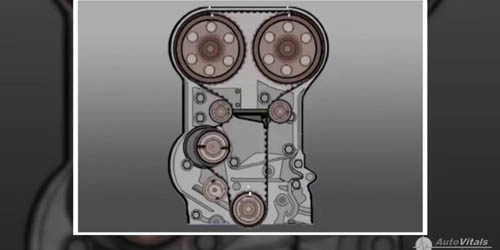The timing belt synchronizes the cam and crankshafts in your engine and keeps the entire car running smoothly. For everything to work properly, the timing belt has to perfectly sync the valves with the motion of the pistons.
To prevent the timing belt from failing, it should be replaced every 50 to 70,000 miles. Ask your service advisor about your recommended interval for a timing belt replacement. If the timing belt slips or breaks, the split-second synchronization of engine parts is lost, and the damage could be catastrophic. A broken timing belt can cause the pistons to collide with the valves, potentially bending or breaking them. The piston, cylinder and crankshaft can also be affected.
From a safety standpoint there is a slight risk, because if the car breaks down, you could be put into a very dangerous situation. There is no environmental impact from a timing belt replacement.

